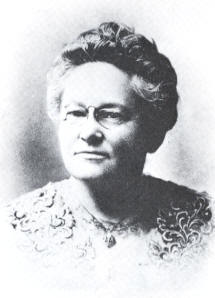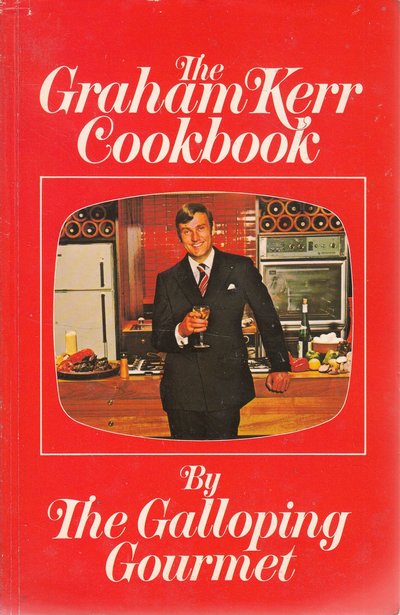|
The Tasteful Life of Fannie Farmer

It's possible you have never heard of Fannie Merritt Farmer. She was born in 1857 and died in 1915 at the age of fifty-seven having never married. Unless you went to a culinary school she would probably not have been a part of most curriculums. That is sad because beyond her contributions to American style cuisine, Fannie was an innovator and remains a wonderful role model for women and anyone with a disability.
My
Born in Boston, Massachusetts, Fannie Farmer was the oldest of four daughters born to Mary and John Farmer. John was an editor and printer. Books filled their home. Her parents encouraged reading and higher educational pursuits. Fannie was an excellent student at Medford High School with plans to go to college. Then, at sixteen, her life was thrown into chaos when she suffered a paralytic stroke.
Fanny was unable to walk. That necessitated that she postpone all her studies and live at home where her family cared for her. During that time she did all she could to regain mobility and become self sufficient. While still unable to walk Fanny stayed busy by following in her mother's culinary footsteps. She leaned to cook and experimented with recipes passed down through the family.
By the late 1800s Boston became one of the places where people coming to the United States from other nations landed, visited or chose to live. People from all over North America saw the city as an important educational and business center. As the population swelled ethnic diversity exerted a huge influence on all things culinary. American style cuisine quickly became simple, tasty and filling dishes which borrowed ingredients and cooking styles from the world over.
As her siblings moved on to their own pursuits, her parents became elderly and she was finally able to walk again, Fanny transformed their home into a boarding house. After a short while it became known and well favored as much for the hospitality offered, as the food served. Fanny toyed with popular family recipes seeking to perfect already tasty dishes and make them healthier.
Fanny's thirst for knowledge gave her a love of Science, particularly as it related to food and diet. In 1887, at the age of thirty, she enrolled in the Boston Cooking School at the height of the domestic science movement. The school adopted and taught all of the important elements of food, sanitary preparation and diet that came out of that movement.
She excelled at the school and remained after graduation in 1889 to accept the position of assistant to the director. In 1891 Fanny became the school principal. By that time she became fascinated with the chemical analysis of food and how convalescent cooking was helping to heal people. As the demand for baked goods soared, she took up the challenge and became one of Boston's most admired bakers.
By 1896 Fanny Farmer became permanently associated with the Boston Cooking School and published Fanny Farmer's Boston Cooking School Cookbook with over 1800 recipes. This innovative book was a departure from others of the time because she included nutritional information and introduced the use of standardized and level measurement using spoons and cups. Farmer also included essays on sanitary cleaning, housekeeping tips, as well as the best methods for canning and drying fruits and vegetables.

The publication of her book was not easily accomplished. Even with a stellar reputation and prestigious position at the Boston Cooking School, the company that eventually agreed to publish the book predicted poor sales insisting the first run be limited to three thousand copies and the costs involved be paid for up front by Fanny.
Although there were popular women authors in her day like Louisa May Alcott, Fanny wasn't writing a book of poetry, short stories or a novel. She was taking on a “how to’ subject which was changing drastically thanks to scientific advances. This at a time when women did not yet have the right to vote and some husband's still whipped their wives if dinner was late with the blessing of local authorities.
Fanny's innovative and scholarly work brought new respect to women and their ability to compete with their male counterparts in intellectual pursuits. Given how she accomplished so much despite being afflicted with a handicapped for so long, her persistence and failure to give up sets an example for us all. It is no surprise that her cookbook far exceeded the dismal sales predictions of her publisher. In short order it quickly became known simply as the Fanny Farmer Cookbook.
After leaving the Boston Cooking School in 1902, Fanny established Miss Farmer's School Of Cookery. She combined her interest in science with her love for cooking to create convalescent diets, as well as teaching plain and fancy cooking. During this time she continued to teach the value of level measurements and stressed the importance of appearance when serving food. She also published another book, this one geared to preparing food for the sick or those with poor appetites.
Fanny Farmer began to lecture as her recipes and use of standardized measurements became wildly popular. Those lectures were published in a Boston newspaper and picked up by others all over the USA and Canada. Although she had to use a wheelchair during the last seven years of her life, Fanny continued to create recipes, write and even taught a course on Dietary Preparation at the Harvard Medical School.
My first exposure to Fanny Farmer's culinary wisdom came when I found a tattered copy of her original cookbook in my mother's kitchen at the age of twelve. During summer break from school I started watching a popular cooking show on daytime TV. The Galloping Gourmet included the culinary knowledge and very entertaining manner of Graham Kerr, a British Cooking Personality.

I looked at Kerr as a kind of Culinary Clown, but the food he prepared sure looked good. That show and my own desire to create dishes more complicated than the scrambled eggs, hamburgers, grilled cheese and such that I had been making since the age of nine gave me the desire to move forward. While Kerr's recipes were a little too complicated for me, the Fanny Farmer Cookbook was exactly what I needed.
I really liked Popovers and found an easy recipe for them in the book. My mom had stepped out to pick up a few things from the store. When she returned, I had warm and delicious Popovers waiting for her. She was surprised and proud of me. After that I moved on to meatloaf, brown meat and gravy and more. Thanks Fanny for your lifelong pursuit of making cooking easier, healthier and tastier!
Books by Fannie Farmer:
Farmer, Fannie Merritt (1896). Boston Cooking-School Cookbook. Boston, MA: Little, Brown, and Company. A complete list of editions may be found at Boston Cooking-School Cook Book. Also known as the Fanny Farmer Cookbook.
Farmer, Fannie Merritt (1898). Chafing Dish Possibilities. Boston, MA: Little, Brown, and Company.
Farmer, Fannie Merritt (1904). Food and Cookery for the Sick and Convalescent. Boston, MA: Little, Brown & Co.
Farmer, Fannie Merritt (1905). What to Have for Dinner: Containing Menus with Recipes for their Preparation. New York, NY: Dodge Publishing Company.
Farmer, Fannie Merritt (1911). Catering for Special Occasions, with Menus and Recipes. Philadelphia, PA: D. McKay.
Farmer, Fannie Merritt (1912). A New Book of Cookery: Eight-hundred and Sixty Recipes Covering the Whole Range of Cookery. Boston, MA: Little, Brown, and Company.
Farmer, Fannie Merritt (Editor) (1913). The Priscilla Cookbook for Everyday Housekeepers. Boston, MA: The Priscilla Publishing Company.
Farmer, Fannie Merritt (1914). A Book of Good Dinners for My Friend; or "What to Have for Dinner". New York, NY: Dodge Publishing Company.
(DOCTOR KNOW) Bill can be contacted on
FACEBOOK.
|

